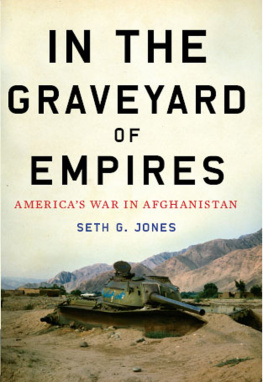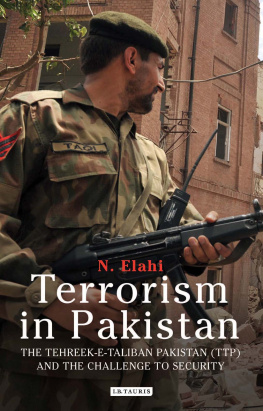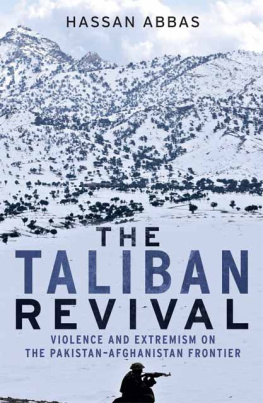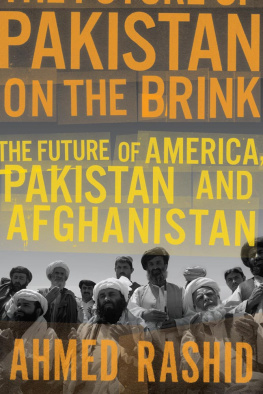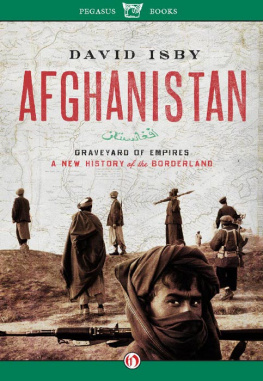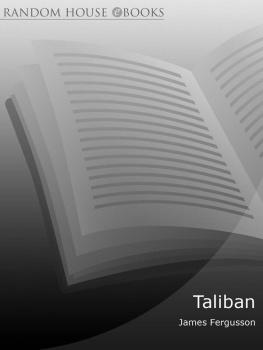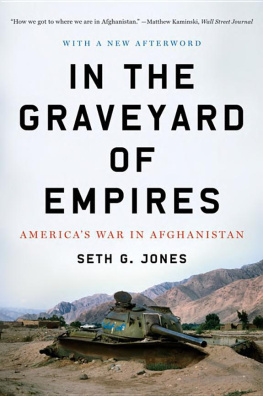SETH G. JONES
W. W. NORTON & COMPANY
Copyright 2009 by Seth G. Jones
Unless otherwise noted, all maps were created by Carol Earnest.
W. W. Norton & Company, Inc.
500 Fifth Avenue, New York, N.Y. 10110
www.wwnorton.com
W. W. Norton & Company Ltd.
Castle House, 75/76 Wells Street, London W1T 3QT
CHRONOLOGY
18391842 First Anglo-Afghan War, which results in a crushing defeat for the British. The departing force is reduced from 16,000 to one British soldier.
18781880 Second Anglo-Afghan War culminates in the Battle of Kandahar, in which British forces decisively defeat Ayub Khan in September 1880.
1893 Sir Henry Mortimer Durand, British foreign secretary of India, signs an agreement with the Afghan ruler, Amir Abdur Rehman Khan, separating Afghanistan from British India on November 12. The demarcation is known as the Durand Line.
1919 Third Anglo-Afghan War, which leads to the Treaty of Rawalpindi on August 8, recognizing Afghan independence.
1929 King Amanullah Khan, who had led Afghanistan to independence and attempted to modernize the country, is overthrown by Habibullah Kalakani, a Tajik. Kalikani is overthrown several months later, marking the start of a dynasty spanning five decades by the Pashtun Musahiban family. The first leader is Muhammad Nadir Shah.
1933 Upon the assassination of Muhammad Nadir Shah, his son, Zahir Shah, takes over at the age of nineteen, beginning one of Afghanistans longest periods of stability in recent times. For thirty years, however, Zahir Shah remains in the background while his relatives run the government.
1963 Zahir Shah takes control of Afghanistan and introduces an era of modernity and democratic freedom.
1973 On July 16, Zahir Shah is overthrown in a coup dtat engineered by his cousin, Daoud Khan, with support of the Afghan army.
1978 Afghan army and air force officers engineer a bloody coup on April 27 in the Afghan lunar month of Sawr, and Daoud Khan is assassinated. Power is transferred to Nur Mohammad Taraki, who establishes the Democratic Republic of Afghanistan.
1979 Nur Mohammad Taraki is arrested by his deputy, Hafizullah Amin, and executed. As instability grips the country, Soviet forces invade on Christmas Eve. On December 27, Soviet Special Forces and KGB storm the Presidential Palace, kill Hafizullah Amin, and install Babrak Karmal as president.
1986 Soviet Premier Mikhail Gorbachev announces a partial withdrawal of Soviet troops from Afghanistan. In November, the Soviets replace Babrak Karmal with Muhammad Najibullah, former head of the Afghan secret police.
1989 On February 15, the last Red Army units roll across the Termez Bridge from Afghanistan and return to the Soviet Union.
1992 The United States ends arms shipments to the Afghan government and militia groups. Afghan groups conduct Beirut-style street fighting in Kabul, destroying parts of the city. Over the next several years, fighting in Kabul reduces the city to rubble.
1994 Taliban forces take control of the southern town of Spin Boldak in October and capture Kandahar in November, beginning the Taliban takeover of most of Afghanistan.
1995 Taliban forces advance northwest and northeast from Kandahar, capturing Herat in September and moving toward Kabul.
1996 Mullah Muhammad Omar removes the cloak of the Prophet Muhammad from the Khirka Sharif shrine in Kandahar in April and appoints himself Amir al-Muminin (Commander of the Faithful). Kabul falls to the Taliban in September.
1998 Taliban forces conquer Mazar-e-Sharif in August and kill Iranian diplomats, leading Iran to mobilize nearly 200,000 troops for an invasion. But the United Nations helps broker a settlement. Also in August, the United States launches cruise missiles against al Qaida training camps in Khowst Province after al Qaida attacks the U.S. embassies in Tanzania and Kenya.
2000 Taliban forces capture the northern city of Taloqan and take control of most of Afghanistan.
September 2001 The commander of the Northern Alliance, Ahmed Shah Massoud, is assassinated by al Qaida operatives on September 9. Two days later, al Qaida operatives hijack commercial planes in the United States and crash them into the World Trade Center in New York City and the Pentagon in Washington, DC. A fourth plane crashes in a field in Shanksville, Pennsylvania. On September 26, a CIA team led by Gary Schroen, code-named Jawbreaker, lands in Afghanistan and begins the U.S. effort to overthrow the Taliban.
October 2001 The United States begins its bombing campaign against the Taliban on October 7.
November 2001 U.S. and Afghan forces conquer the northern city of Mazar-e-Sharif on November 10, followed by Taloqan (November 11), Bamiyan (November 11), Herat (November 12), Kabul (November 13), Jalalabad (November 14), and Kunduz (November 26). At the end of November, the United States begins planning the war in Iraq.
December 2001 Afghan political leaders sign the Bonn Agreement on December 5, establishing a timetable for the creation of a representative government. The southern city of Kandahar falls to U.S. and Afghan forces on December 56, largely completing the overthrow of the Taliban regime. The United States narrowly misses killing Osama bin Laden during fighting in Tora Bora, near the Afghanistan-Pakistan border.
March 2002 U.S. and Coalition forces launch Operation Anaconda against al Qaida fighters and other militants in the Shah-i-kot Valley from March 2 to 16.
April 2002 In a speech at the Virginia Military Institute on April 17, President Bush urges a Marshall Plan for Afghanistan, calling for financial assistance.
June 2002 Afghanistan holds an emergency loya jirga, which leads to the selection of Hamid Karzai as head of a transitional government.
August 2002 Insurgents orchestrate a series of offensive operations in such provinces as Kandahar and Khowst. These attacks mark the beginning of the Taliban-led insurgency against Hamid Karzais government.

